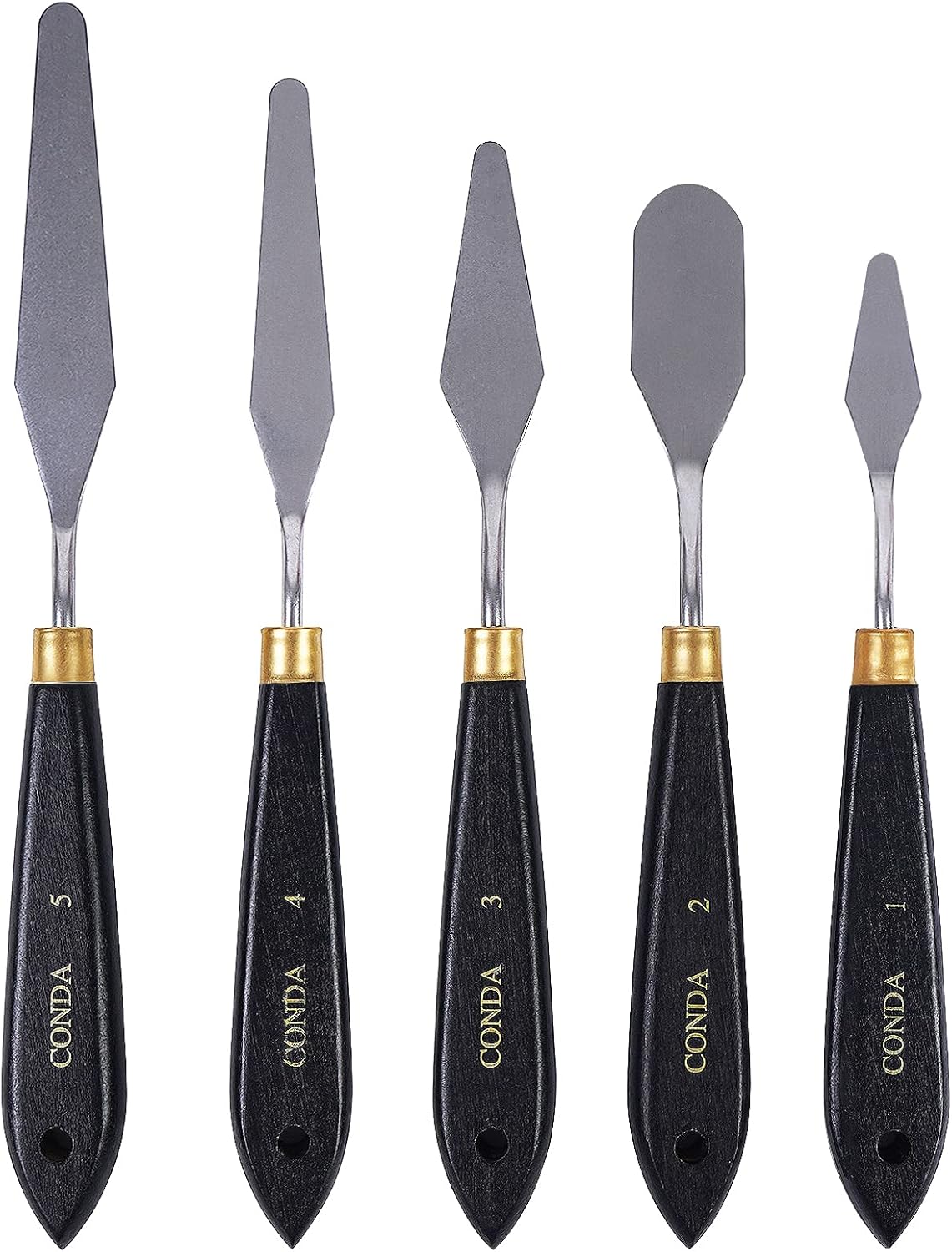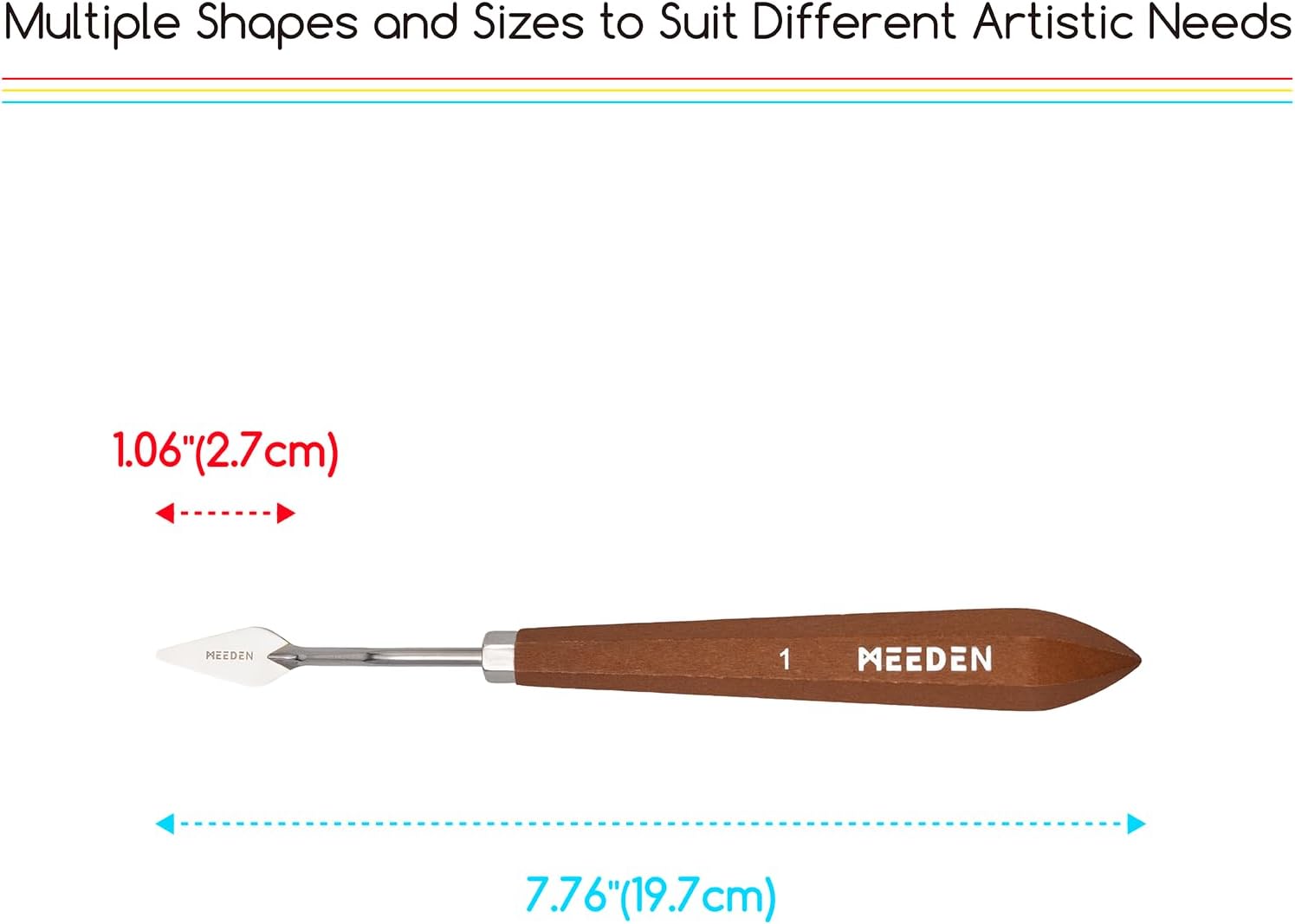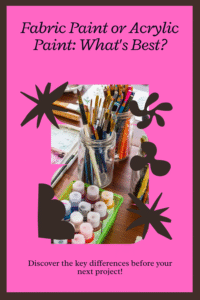Oil painting can be an incredibly rewarding and therapeutic form of art. One of the key tools that every oil painter relies on, but doesn’t always get the attention it deserves, is the humble palette knife.
Whether you’re using it for mixing colors or applying paint to the canvas in unique textures, the right palette knife can make all the difference in your artwork.
But with so many options available on the market, how do you choose the best one for your needs?
In this guide, I’ll walk you through everything you need to know about palette knives for oil painting.
From understanding their types and shapes to learning how to use them effectively, we’ll explore every detail you need to make an informed decision.
I’ll also share my personal insights and some common mistakes to avoid. By the end, you’ll know exactly which palette knife to pick for your next project.
| Product Image | Product Name | Features | Price |
|---|---|---|---|
 |
conda Palette Knife Painting Stainless Steel | Set includes 5 unique palette knives for versatile texture creation. High-quality matte stainless steel blades resist wear and corrosion. Tempered and hand-ground blades for consistent flexibility and precision. Perfect for oil and acrylic painting. |
Check Price |
 |
Liquitex Professional Freestyle Small Painting Knife | Enables textural effects and expressive mark-making. Designed for use with thick-bodied and gel-based materials. Crafted for durability and flexibility. Blade shape optimized for precision and control. |
Check Price |
 |
Mont Marte Studio Palette Knife | Includes 5 palette knives in different sizes and style. Flexible stainless steel blades for smooth paint handling. Ideal for mixing, spreading, and layering paint. Resistant to corrosion and wear. |
Check Price |
 |
Martin/ F. Weber Bob Ross Number10 Standard Painting Knife | Made of stainless steel for durability and corrosion resistance. Precision edge ideal for mixing, spreading, and sculpting paint. Delivers optimum results with professional painting techniques. Solid construction suitable for heavy use. |
Check Price |
 |
HTS 316V8 8.5″ Tapered Wood Handle Stainless Steel Palette Knife | Flexible stainless steel blade for smooth mixing and spreading. Wooden handle for comfortable grip and classic aesthetic. Great for oil and acrylic paint preparation. Smooth edges prevent tearing or gouging canvas. |
Check Price |
 |
9 Pcs Paint Palette Knives for Painting, | Includes 9 palette knives in assorted shapes and sizes. Designed for color adjustment, thick coating, and large-area coloring. Suitable for oil, acrylic, and canvas painting. Durable stainless steel blades resist corrosion and rust. Wooden handles offer a comfortable grip for long painting sessions |
Check Price |
 |
MEEDEN Artist Palette Painting Knife | Made from superior stainless steel for durability and corrosion resistance. Quick rebound to original shape after use. Curved neck design for easy paint pickup and improved handling. Premium beech wood handle for a smooth, comfortable grip. Enhances pressure and angle control for detailed work |
Check Price |
Different Types of Palette Knives
Palette knives come in all shapes and sizes, each serving a unique purpose. Here are the most common types you’ll encounter:
Flat Palette Knife
The flat palette knife is one of the most common and versatile types of knives. With a long, flat blade, this knife is ideal for mixing paint on the palette and spreading it across the canvas.
Its wide, flat surface makes it perfect for creating broad strokes or laying down large, thin layers of paint. Many artists also use the flat palette knife to scrape off excess paint from the canvas.
Tapered Palette Knife
The tapered palette knife features a narrower, pointed blade that tapers to a sharp tip. This knife is excellent for more detailed work, like creating thin lines or intricate textures. It’s also used to add highlights or create defined edges in your painting. The smaller size of the blade allows you to control the amount of paint applied with more precision.
Diamond-Shaped Palette Knife
The diamond-shaped palette knife has a blade that forms a point at each end, creating a diamond shape when viewed from above. This unique shape allows for both fine and broad strokes, making it useful for various techniques, including creating cross-hatching or adding texture.
The diamond shape offers great flexibility, allowing you to use both the pointed tip and the broader flat side.
Spatula Palette Knife
This type of palette knife features a broad, spatula-like blade, ideal for heavy impasto painting techniques. The spatula palette knife is perfect for artists who want to add thick, expressive layers of paint to their work.
The flat, wide surface can hold a large amount of paint, enabling you to spread it quickly and boldly across the canvas.
Offset Palette Knife
The offset palette knife has a blade that is slightly angled or “offset” from the handle. This feature allows for better control and precision when applying paint, especially when working in tight spaces or around detailed areas.
It is particularly helpful when mixing colors or blending paint on the palette, as the angle provides more comfort and ease of use.
Fan Palette Knife
As the name suggests, the fan palette knife has a blade that fans out in a shape resembling a fan. This knife is ideal for blending colors or creating textured effects like tree leaves, clouds, and soft gradients.
Its unique design allows for smooth transitions and can be used for both blending and adding delicate texture to your painting.
Round Palette Knife
A round palette knife has a rounded blade, ideal for blending paint and creating circular strokes. Artists often use this knife to apply paint in a fluid, rounded motion, making it great for softening harsh edges or adding depth to a piece.
Scraper Palette Knife
Scraper knives feature a thin, flexible blade designed for scraping paint off the canvas. They are great for creating subtle effects or removing excess paint to reveal layers underneath.
Scraper knives can also be used for cleaning the palette or for creating textured areas by lifting off some of the paint from the canvas.
How to Choose the Right Palette Knife for Oil Painting
Choosing the best palette knife depends on your style and the techniques you plan to use. Here’s a step-by-step guide to help you pick the right knife for your needs:
Consider the Blade Shape
As we’ve seen, different palette knives have different blade shapes, each suited for specific tasks. If you’re just starting out, a flat or tapered knife will likely be the most versatile option for mixing and spreading paint.
For more intricate work, you might want to try a diamond-shaped or offset knife. For heavy impasto techniques, a spatula knife will give you the thick paint application you need.
Think About Handle Comfort
The handle of a palette knife is just as important as the blade. A comfortable, ergonomic handle ensures that you can work for extended periods without discomfort. Look for a handle that feels solid in your hand, with a good grip that allows for easy control of the knife.
Wood handles are classic and durable, but plastic handles can be lightweight and comfortable for long painting sessions.
Decide on Blade Flexibility
Palette knives come in different levels of flexibility. A stiff blade offers more control, while a flexible blade allows for more fluid, sweeping strokes.
For artists who prefer bold, thick strokes, a more flexible blade will help create smoother, more dynamic textures. On the other hand, if you want precision and control, opt for a stiffer blade.
Check the Material of the Knife
Most palette knives are made of either stainless steel or carbon steel. Stainless steel is durable, rust-resistant, and easy to clean, making it a great choice for most artists.
Carbon steel is stronger but prone to rust, so it requires more maintenance. Depending on your preferences and needs, you may prefer one material over the other.
Consider the Size
Palette knives come in various sizes, from tiny knives for fine details to large knives for broad strokes. The size of the knife you choose should depend on the scale of your artwork and the type of techniques you want to use.
A smaller knife is ideal for adding details, while a larger one is great for creating texture or working on large areas.
Techniques and Uses for Palette Knives in Oil Painting
The beauty of palette knives lies in their versatility. Whether you’re mixing paint, blending colors, or applying thick textures, there’s a technique for every purpose. Here are some common ways artists use palette knives in oil painting:
Mixing Paint
One of the most basic uses for a palette knife is mixing paint on your palette. A flat palette knife is perfect for this task, as it allows you to combine colors smoothly without overmixing.
Using a palette knife to mix your colors gives you more control over the pigment ratios, ensuring you get the exact shades you need.
Creating Impasto
Impasto is a technique where paint is applied thickly to the canvas to create a raised texture. For this, you’ll need a palette knife with a broad, flexible blade, like a spatula knife.
You can build up layers of thick paint, which will add texture and depth to your painting. Impasto can be used to create everything from rough textures to intricate patterns.
Adding Texture and Detail
For more detailed work, such as creating foliage, hair, or fabric textures, a tapered or fan-shaped palette knife is ideal. The pointed tip allows for precise strokes that can mimic the texture of the subject you’re painting.
By applying the paint in varying thicknesses, you can create a range of effects that add realism and depth.
Blending Colors
Palette knives are great for blending colors, especially when you want to create smooth transitions.
The flexible blade of a rounded or fan palette knife allows you to mix colors on the canvas without disturbing the underlying layers of paint. This technique works well for creating soft gradients or smooth skin tones.
Scraping and Layering
One of the unique features of palette knives is their ability to scrape paint off the canvas. If you’ve applied too much paint in a particular area or want to reveal some of the underpainting, a scraper palette knife can be used to remove excess paint.
This technique can also be used creatively to create texture or to add layers of paint in a controlled way.
Common Mistakes to Avoid When Using Palette Knives
While palette knives are versatile and fun to use, there are some common mistakes that many artists make. Here are a few to watch out for:
Using the Wrong Knife for the Job
Choosing the wrong knife for a specific technique can lead to frustration and unsatisfactory results. For example, using a flat palette knife when you need fine detail will make it difficult to create sharp lines. Similarly, using a small, detailed knife for large, sweeping strokes will make the process slow and cumbersome. Always choose a knife that’s suited to the technique you’re trying to achieve.
Applying Too Much Pressure
Palette knives require a delicate touch. Applying too much pressure can cause the paint to smear or disrupt the underlying layers. A light hand is essential, especially when blending or scraping paint. Try to avoid forcing the knife to do something it wasn’t designed for—like creating fine details with a broad spatula knife.
Forgetting to Clean Your Palette Knife
A palette knife is only useful if it’s kept clean. Oil paint can dry quickly, and if you don’t clean your palette knife regularly, dried paint can build up, affecting the quality of your strokes and the colors you mix. After each use, clean your palette knife with solvent or soap and water to keep it in top condition.
Overusing the Same Knife for Different Techniques
While it’s tempting to use the same knife for every technique, different knives are suited for different tasks. Overusing one knife may limit your ability to achieve certain effects. Invest in a variety of palette knives so you can select the right tool for the job.
Conclusion
Choosing the best palette knife for oil painting depends on your personal style, techniques, and the effect you want to achieve. By understanding the different types of palette knives available and their uses, you can make more informed decisions about which knives to incorporate into your painting practice.
Here’s a quick recap of the key points to remember:
- Palette knives come in various shapes, each designed for different tasks (mixing, applying, scraping, etc.).
- Choose a knife with a comfortable handle, the right size, and a blade flexibility that suits your needs.
- Learn how to use palette knives for blending, impasto, and texture to elevate your artwork.
- Avoid common mistakes, like using the wrong knife or applying too much pressure, for better results.
If you’re new to palette knives or looking to improve your oil painting techniques, I encourage you to experiment and explore different knives and methods. With the right tools and some practice, you’ll be able to create stunning textures and effects that make your oil paintings truly stand out.
So, grab your palette knives, and let’s start painting! What’s your favorite technique for using palette knives? Share your thoughts in the comments below. Happy painting!
FAQs
Can I use a palette knife with acrylic paints?
Yes, palette knives can be used with acrylic paints, though the effects may differ from those achieved with oils. Acrylics dry much faster, so you’ll need to work quickly, especially when creating textured strokes or layers.
How do I clean my palette knife after each use?
To clean your palette knife, use a solvent like turpentine or mineral spirits to remove oil paint. For acrylics, soap and water usually do the trick. Always wipe the knife clean before switching to a new color to prevent contamination.
Can I use a palette knife for mixing paint on a canvas?
Yes, palette knives are excellent for mixing colors directly on the canvas. They allow you to blend paint with more control than a brush, and they’re perfect for creating texture and depth.
What should I look for in a high-quality palette knife?
Look for a palette knife with a durable, rust-resistant stainless steel blade, a comfortable handle, and a well-constructed design that feels good in your hand. Quality palette knives should also be flexible enough for different techniques, but not too flimsy.


